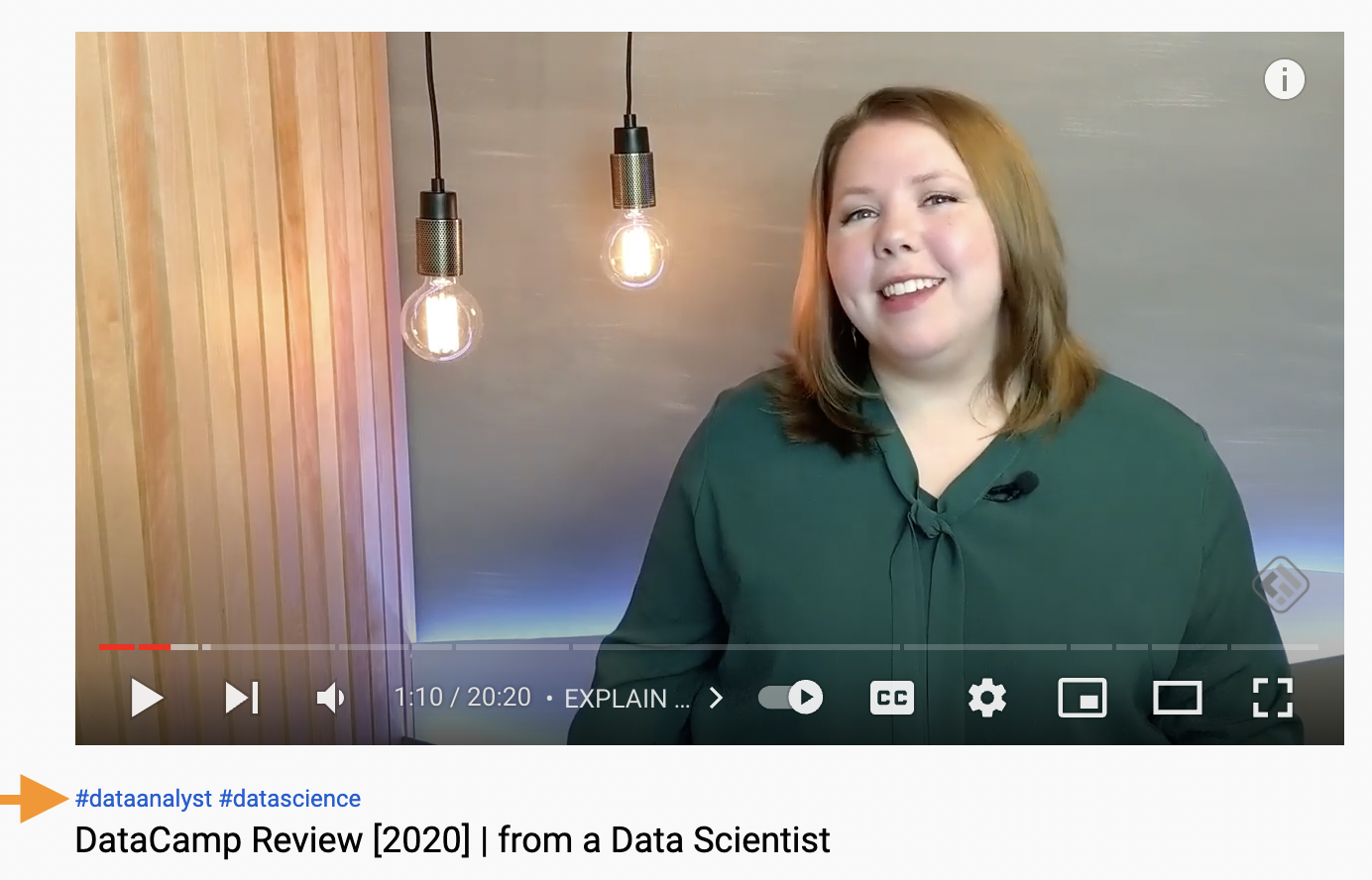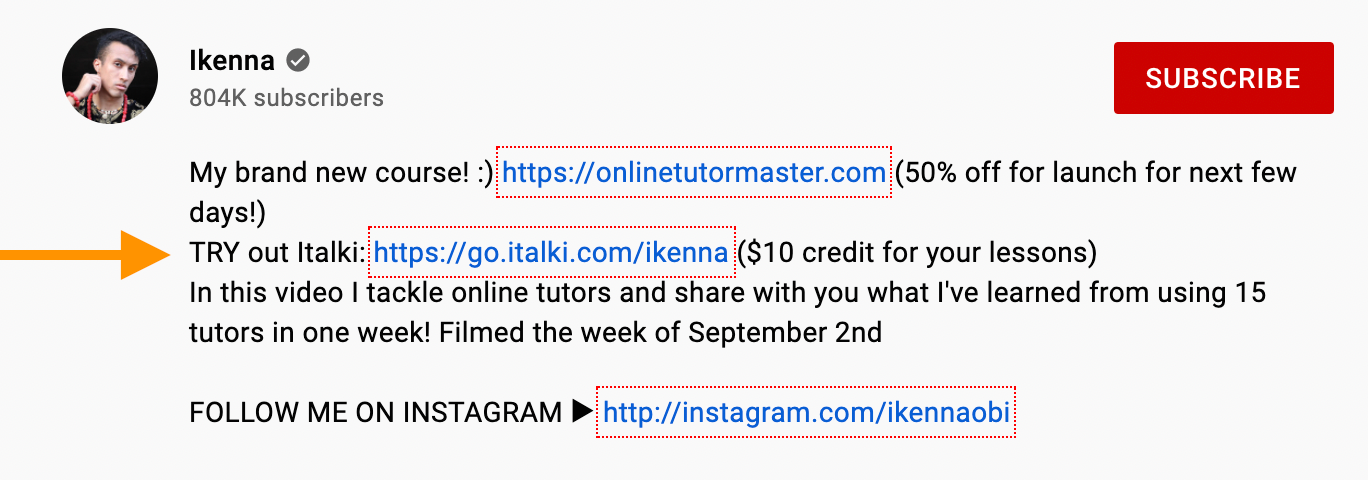In this article, we will browse through the three most popular ways to promote e-learning services: using the industry influencers, integration to the video content, and mentioning in comments.
1. Online reviews by the industry influencers
This way looks quite obvious: find a person who is sufficiently respected in the industry, ask them to make a review of your product, and use their audience as your target audience. Sounds easy, but you have to be very, very bold to use this method, and here’s why.
The influencers of the industry can’t be compared to the top players with their almost unlimited marketing budgets. But still, they have at least a decent share of people who can become the target audience. That’s the whole reason for marketing collaboration with them, right?
These people have their reputation and have to share fair information because they are risking their audience and popularity, not the brand behind them. So if the brand’s product won’t be perfect or won’t match the standards it is supposed to match, the brand may get a bunch of rotten tomatoes instead of a stellar review. Many of the influencers don’t even promise to write a totally positive review. They take the money for simply trying the product and giving honest feedback.
There are several ways for the e-learning giants to make themselves safe. They can either make a contract that obliges the influencers to write a generally positive review or simply hire these influencers to work as very privileged testers and QAs of the new products. The second approach allows them to write negative reviews, but, instead of publishing, they will be used to make the product better.
The third and perfect variant we’ll talk about in more detail later is when the influencer has already been using the product for some time and is encouraged by the company to write a review. It almost guarantees a review that is both positive and plausible, without entering the domain of pure flattery. Moreover, the influencer can share some details that only an experienced user can know. People usually see these tips as a marker of trustworthiness, because it can be proof that the person has truly worked with the product before.

If we look at Jen’s review on DataCamp, we’ll see some details that made her YouTube video a successful marketing DataCamp campaign. Firstly, she is a renowned specialist with forty thousand subscribers whose words truly matter to her audience. Secondly, she dedicates a full review to a single product, being honest about that – not just mentioning the product in between a completely unrelated video.
Finally, she puts all the links in the description, so that anyone can go try the product by themselves instantly, with a single mouse click. Additionally, such videos can later be used on other social media and websites to provide a kind of expert proof. An example is this Datacamp review where the video by Jen is used in the section “Reviews”.
2. Integrations in the related video
This variant may be cheaper and, if poorly performed, may look like a blatant advertisement. The trick is to make it as native as possible, with product placement looking natural and, possibly, even being mentioned among similar products. The obvious advertisement is also a comparison of the different products with everyone, except the advertised one, being bad. While mentioning the product could look natural, it looks very, very artificial under these circumstances.
Contrasting to the previous examples, where the experts can openly be brand ambassadors, here they should be as independent as possible. It’s hard to believe that the person working for Company X mentions Y’s product with no strings attached. There are some exceptions, though: for example, the X’s workers telling the insider information will always get their audience. The measure of video’s “virusness” is up to the company: from fully open interviews to “shocking reveals” and “leakages.”
One of the good examples of such marketing campaigns is Ikenna’s online language tutors review. He honestly compares the whole bunch of tutors he tried and each one has pros and cons. The mention of the video’s sponsor, Italki, is very organic: it’s the site Ikenna booked the lessons at. Talking about the platform before starting reviewing the tutors looks natural. The audience barely notices that, actually, it’s not only the tutors’ review, it’s also the platform review and it’s very positive.
Ikenna spends only a fraction of his screen time talking about Italki, but this time is at the beginning of the video, so it gets the most views. He also concludes with his new project reveal, which is also at Italki. So, the audience has two reasons to use this portal: Ikenna’s loyal viewers may subscribe to his own course, and the ones (including random people who got that video from the YouTube search) may go and look for a new language tutor.
There are also all the links in the description below the video. Unlike the previous example, they are personalised links with discounts. The video author doesn’t hide that he will benefit from the subscriptions, so this is a very honest advertisement. Many people value this honesty and will use Ikenna’s link as a way to say “thank you” for his work and entertaining videos.

3. Mentioning companies in Instagram posts and stories
Instagram is a whole new advertisement dimension and its strategies differ greatly from the ones available for YouTube videos. Instagram is all about beautiful or interesting photos, not context. We can’t see the full text, just a picture, the author’s name, and a few first words. So, to become a successful advertisement the picture should be both interesting and connected to the subject.
Another useful advertisement tool is the hashtag system. It is usual to place more than 10 hashtags under Instagram posts, so, if one or two of them are dedicated to the product, it looks natural (or, no one will notice them at all among the dozen of other hashtags). It’s very important to not use all the hashtags to advertise, mentioning also the main emotional anchors of the post. People search posts with different hashtags, so, if you want to engage people outside the core audience, you should give them some hashtags to search, too.
The Instagram post of techwithsofIa is a very good advertising example. The conventionally beautiful woman shows off her astonishing work with Coursera. The photo is simultaneously bright and attention-catching, and also very intriguing. The first line about an interesting project makes the audience open the photo and learn more about Sofia’s 100 days of Data Science vlog, getting more mentions about the Coursera courses. The comments are also supporting the theme, rising the post in the Instagram feed. The theme of young women in STEM is always discussed a lot, so the combination of photo and text is very successful for comment generation.

Online learning marketing has different audiences, but all the possible clients share the same two traits: they are smart (because online learning demands it) and they, obviously, are online.
The examples of e-learning companies’ advertising campaigns show that the best ways of presenting their goods online are the reviews of the independent experts, native product placement, or amazing cases that drive people to learn more both about them and about the product involved.








